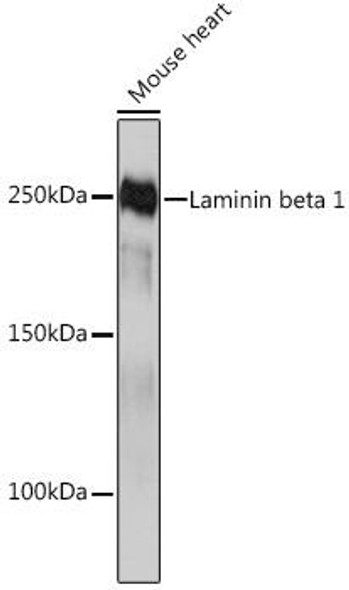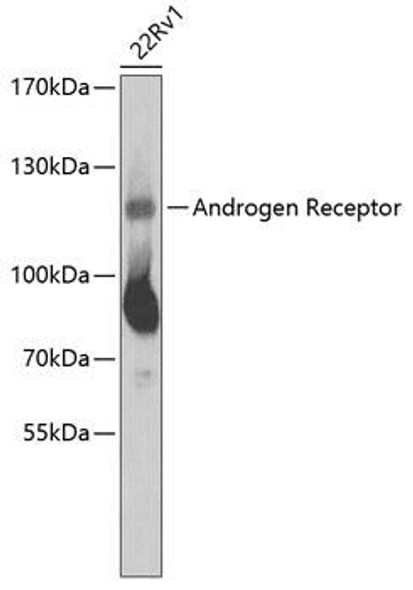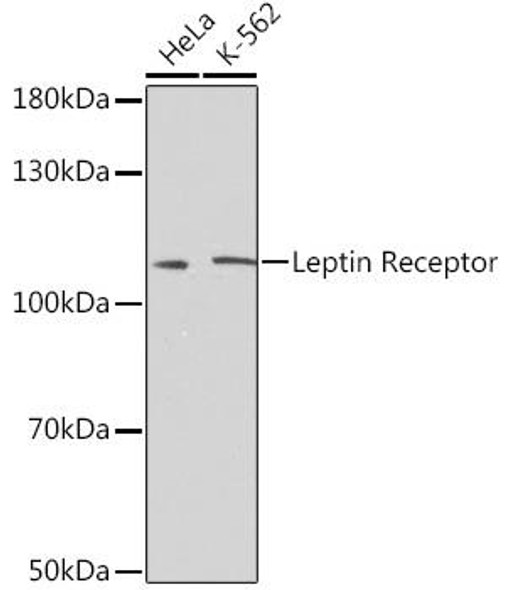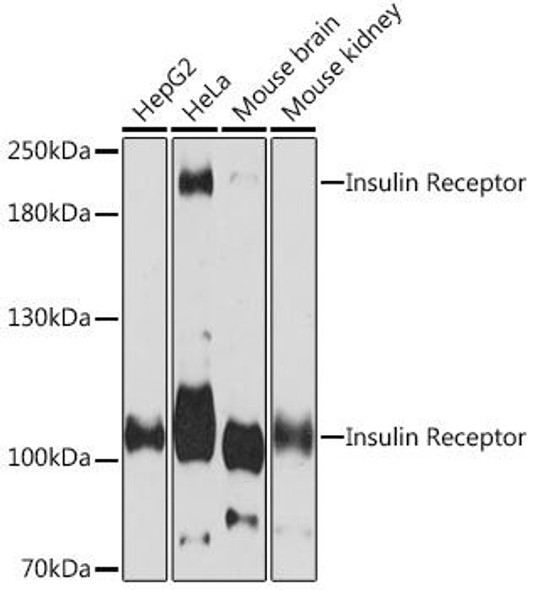Anti-67kDa Laminin Receptor Antibody (CAB5968)
- SKU:
- CAB5968
- Product type:
- Antibody
- Antibody Type:
- Monoclonal Antibody
- Reactivity:
- Human
- Mouse
- Rat
- Host Species:
- Rabbit
- Isotype:
- IgG
- Synonyms:
- 37LRP
- 67LR
- ICAS
- LAMBR
- LAMR1
- LBP
- LBP/p40
- LRP
- LRP/LR
- NEM/1CHD4
- SA
- lamR
- p40
Description
| Product Name: | 67kDa Laminin Receptor Rabbit mAb |
| Product Code: | CAB5968 |
| Size: | 20uL, 50uL, 100uL |
| Synonyms: | 37LRP, 67LR, ICAS, LAMBR, LAMR1, LBP, LBP/p40, LRP, LRP/LR, NEM/1CHD4, SA, lamR, p40 |
| Applications: | WB, IF |
| Reactivity: | Human, Mouse, Rat |
| Host Species: | Rabbit |
| Immunogen: | A synthesized peptide derived from human 67kDa Laminin Receptor |
| Applications: | WB, IF |
| Recommended Dilutions: | WB 1:500 - 1:2000 IF 1:50 - 1:200 |
| Reactivity: | Human, Mouse, Rat |
| Positive Samples: | PC-12, A-549, BxPC-3, Raji, RAW264.7, Rat pancreas |
| Immunogen: | A synthesized peptide derived from human 67kDa Laminin Receptor |
| Purification Method: | Affinity purification |
| Storage: | Store at -20°C. Avoid freeze / thaw cycles. Buffer: PBS with 0.02% sodium azide, 0.05% BSA, 50% glycerol, pH7.3. |
| Isotype: | IgG |
| Sequence: | Email for sequence |
| Gene ID: | 3921 |
| Uniprot: | P08865 |
| Calculated MW: | 42kDa |
| Observed MW: | 45KDa |
| UniProt Protein Function: | RPSA: Required for the assembly and/or stability of the 40S ribosomal subunit. Required for the processing of the 20S rRNA- precursor to mature 18S rRNA in a late step of the maturation of 40S ribosomal subunits. Also functions as a cell surface receptor for laminin. Plays a role in cell adhesion to the basement membrane and in the consequent activation of signaling transduction pathways. May play a role in cell fate determination and tissue morphogenesis. Acts as a PPP1R16B-dependent substrate of PPP1CA. Also acts as a receptor for several other ligands, including the pathogenic prion protein, viruses, and bacteria. Belongs to the ribosomal protein S2P family. |
| UniProt Protein Details: | Protein type:Ribosomal Chromosomal Location of Human Ortholog: 3p22.2 Cellular Component: cytoplasm; cytosol; membrane; nucleus; plasma membrane Molecular Function:laminin binding; laminin receptor activity; protein binding; ribosome binding; structural constituent of ribosome; viral receptor activity Biological Process: cell adhesion; cellular protein metabolic process; endonucleolytic cleavage in ITS1 to separate SSU-rRNA from 5.8S rRNA and LSU-rRNA from tricistronic rRNA transcript (SSU-rRNA, 5.8S rRNA, LSU-rRNA); endonucleolytic cleavage to generate mature 3'-end of SSU-rRNA from (SSU-rRNA, 5.8S rRNA, LSU-rRNA); entry of virus into host cell; gene expression; mRNA catabolic process, nonsense-mediated decay; ribosomal small subunit assembly and maintenance; rRNA export from nucleus; selenium metabolic process; selenocysteine metabolic process; SRP-dependent cotranslational protein targeting to membrane; translation; translational elongation; translational initiation; translational termination; viral infectious cycle; viral reproduction; viral transcription Disease: Asplenia, Isolated Congenital |
| NCBI Summary: | Laminins, a family of extracellular matrix glycoproteins, are the major noncollagenous constituent of basement membranes. They have been implicated in a wide variety of biological processes including cell adhesion, differentiation, migration, signaling, neurite outgrowth and metastasis. Many of the effects of laminin are mediated through interactions with cell surface receptors. These receptors include members of the integrin family, as well as non-integrin laminin-binding proteins. This gene encodes a high-affinity, non-integrin family, laminin receptor 1. This receptor has been variously called 67 kD laminin receptor, 37 kD laminin receptor precursor (37LRP) and p40 ribosome-associated protein. The amino acid sequence of laminin receptor 1 is highly conserved through evolution, suggesting a key biological function. It has been observed that the level of the laminin receptor transcript is higher in colon carcinoma tissue and lung cancer cell line than their normal counterparts. Also, there is a correlation between the upregulation of this polypeptide in cancer cells and their invasive and metastatic phenotype. Multiple copies of this gene exist, however, most of them are pseudogenes thought to have arisen from retropositional events. Two alternatively spliced transcript variants encoding the same protein have been found for this gene. [provided by RefSeq, Jul 2008] |
| UniProt Code: | P08865 |
| NCBI GenInfo Identifier: | 125969 |
| NCBI Gene ID: | 3921 |
| NCBI Accession: | P08865.4 |
| UniProt Secondary Accession: | P08865,P11085, P12030, Q16471, Q6IPD1, Q6IPD2, Q6NSD1 Q6NXQ8, Q86VC0, |
| UniProt Related Accession: | P08865 |
| Molecular Weight: | |
| NCBI Full Name: | 40S ribosomal protein SA |
| NCBI Synonym Full Names: | ribosomal protein SA |
| NCBI Official Symbol: | RPSA |
| NCBI Official Synonym Symbols: | SA; LBP; LRP; p40; 67LR; ICAS; lamR; 37LRP; LAMBR; LAMR1; LRP/LR; LBP/p40; NEM/1CHD4 |
| NCBI Protein Information: | 40S ribosomal protein SA |
| UniProt Protein Name: | 40S ribosomal protein SA |
| UniProt Synonym Protein Names: | 37 kDa laminin receptor precursor |
| Protein Family: | 30S ribosomal protein |
| UniProt Gene Name: | RPSA |
| UniProt Entry Name: | RSSA_HUMAN |









